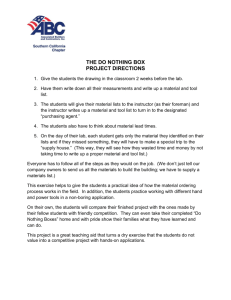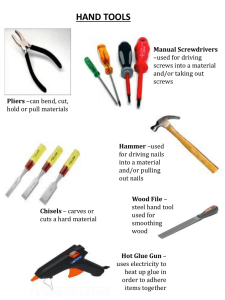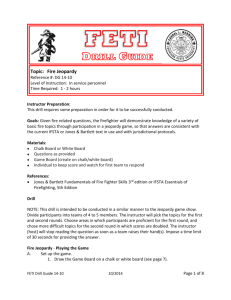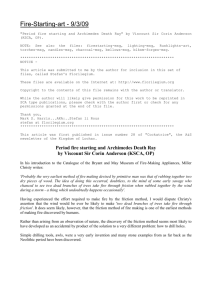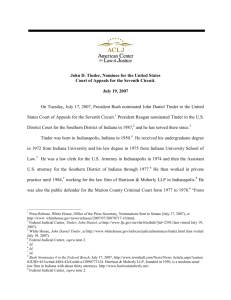Reading Handout- Whats So Great About Fire
advertisement
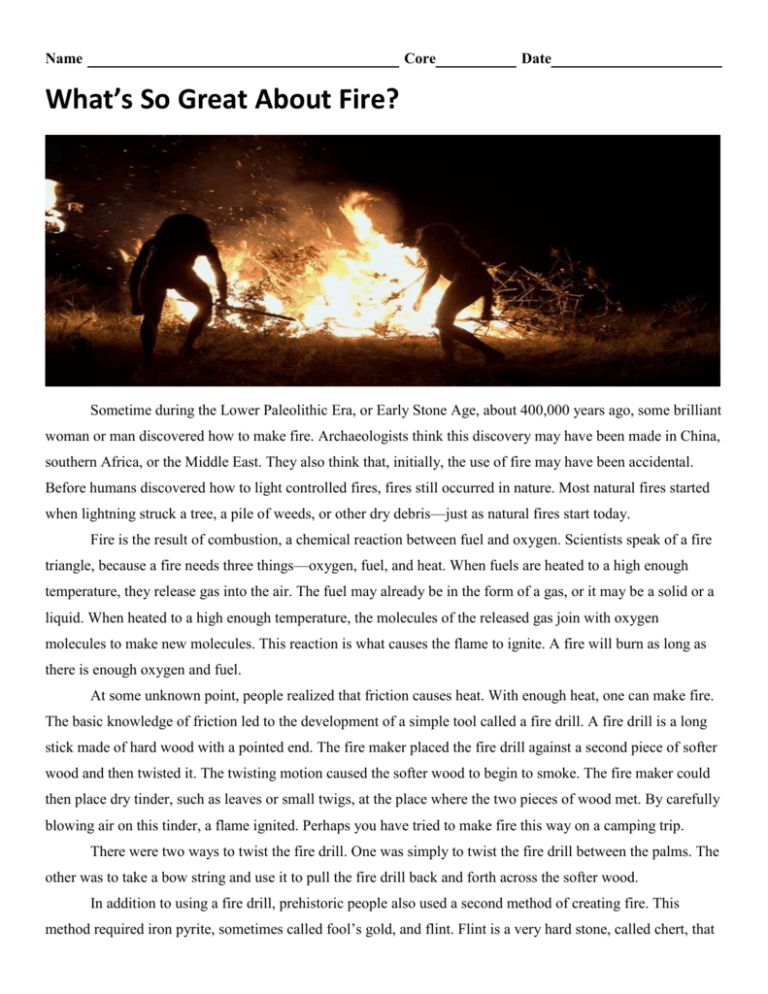
Name _______________________________ Core________ Date_________________ What’s So Great About Fire? Sometime during the Lower Paleolithic Era, or Early Stone Age, about 400,000 years ago, some brilliant woman or man discovered how to make fire. Archaeologists think this discovery may have been made in China, southern Africa, or the Middle East. They also think that, initially, the use of fire may have been accidental. Before humans discovered how to light controlled fires, fires still occurred in nature. Most natural fires started when lightning struck a tree, a pile of weeds, or other dry debris—just as natural fires start today. Fire is the result of combustion, a chemical reaction between fuel and oxygen. Scientists speak of a fire triangle, because a fire needs three things—oxygen, fuel, and heat. When fuels are heated to a high enough temperature, they release gas into the air. The fuel may already be in the form of a gas, or it may be a solid or a liquid. When heated to a high enough temperature, the molecules of the released gas join with oxygen molecules to make new molecules. This reaction is what causes the flame to ignite. A fire will burn as long as there is enough oxygen and fuel. At some unknown point, people realized that friction causes heat. With enough heat, one can make fire. The basic knowledge of friction led to the development of a simple tool called a fire drill. A fire drill is a long stick made of hard wood with a pointed end. The fire maker placed the fire drill against a second piece of softer wood and then twisted it. The twisting motion caused the softer wood to begin to smoke. The fire maker could then place dry tinder, such as leaves or small twigs, at the place where the two pieces of wood met. By carefully blowing air on this tinder, a flame ignited. Perhaps you have tried to make fire this way on a camping trip. There were two ways to twist the fire drill. One was simply to twist the fire drill between the palms. The other was to take a bow string and use it to pull the fire drill back and forth across the softer wood. In addition to using a fire drill, prehistoric people also used a second method of creating fire. This method required iron pyrite, sometimes called fool’s gold, and flint. Flint is a very hard stone, called chert, that will spark when it is hit by metal. When iron pyrite hits flint, it makes a spark. If the fire maker aimed that spark at a pile of dry tinder and gently blew on it, a flame could be created. Keeping the Fire Going Both of these methods were time-consuming. They were also difficult to perform in rain, snow, and windy weather. To keep their fire, some people carried it in pottery lamps. Because the pottery lamp had sides, it protected the flame and made the fire burn longer. Matches were not developed until the 1800s. How Fire Changed Life Fire helped humans in at least three important ways. First, it kept people warm. Fire allowed people in cold climates to survive the freezing temperatures of winter. Second, fire permitted people to roast meats and root vegetables such as potatoes, carrots, and turnips. This not only made the food tastier, but it also killed germs. In addition, cooked food could be preserved longer than raw food. Third, the fire provided light. This helped humans extend the time they could work, because they could see things after the sun went down. This light also helped keep people safe by scaring away predators. Wolves or coyotes did not come near human camps with fire, because the fire would allow them to be seen. For nomadic Paleolithic Era people without permanent dwellings, this was very important! Fire helped humans in other ways, but some uses of this technology were slow to develop. For example, thousands of years passed before hunters learned that if they placed the point of a wooden spear in the fire, it would harden. A harder spear tip was more likely to result in the death of an animal. The successful hunter then had meat, fur, and skins for clothing or tents, as well as bones for needles and other tools. With fire, people could bake clay in a heated kiln to make pottery. Water and food could then be stored and carried in pottery vessels rather than in skin bags. The fired pots lasted longer, which meant the food within them also lasted longer. People also learned how to construct outdoor ovens. With these ovens, people could bake grains into bread. This helped expand the human diet. Fire Today Even though our modern lives are filled with technology, the simple technology of fire is still important. In addition to the uses described above, fire is used today in many different fields, including construction, chemistry, and power generation. In construction, welders use very hot torches to melt metal or join two pieces of metal together. Chemists can use fire to trigger chemical reactions. Coal-fired power plants use fire to create electricity. Coal is burned, and the energy that is released is converted into electrical energy. Not too long ago, fire was also used in medicine to sterilize surgical instruments. Fire may seem like a simple part of life. It is something that humans have learned to control, and it has been part of human life for thousands of years. Yet, despite its seeming simplicity, fire is a technology. The technology of fire has allowed humans to solve many problems and advance in many ways. It provided early humans with safety, a more diverse diet, and better tools. Fire continues to benefit humans today. In the future, maybe people will develop even more uses for this ancient technology. _____________________________________________________________________________ Question (8 points) 1. Fire changed life for early humans in several ways. Explain at least three of the changes and their results. Provide details and evidence to support your answer.
